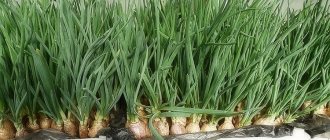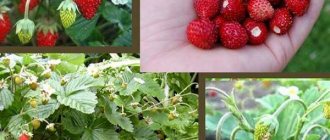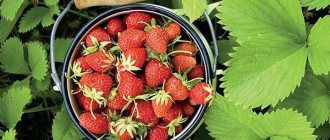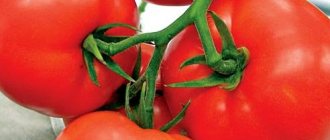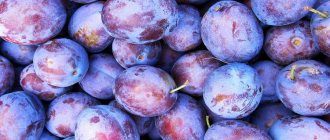Remontant varieties of strawberries attract gardeners with a number of advantages. In fact, their “progenitor” is the common wild strawberry, which is known for its characteristics: active fruiting, unpretentiousness and disease resistance.
To feel the fresh breath of the Alps, you don’t have to go to the mountains. It is enough to grow “alpine” berries on your plot. In recent decades, thanks to the achievements of breeders, strawberry varieties with neat bushes and small berries have been developed, collectively called “alpine strawberries.” Its main features:
- compact dimensions;
- long fruiting period;
- strong and tart aroma;
- possibility of propagation by seeds.
What varieties of alpine strawberries are recognized as the best for the middle zone?
Alexandria
The bushes of this remontant variety grow very neatly; whiskers practically do not form on them. Plants are resistant to drought, frost, pests and diseases. The berries are usually medium in size, slightly elongated, with a strong aroma and excellent taste. Alexandria bears fruit for 3-4 years. Bushes can also be grown in pots (including indoors) all year round.
| Berry color | Berry weight (g) | Maturation (period) | Bush height (cm) |
| Bright scarlet | 6-8 | Late May – mid October | 17-20 |
Basic agricultural techniques
Approximate planting dates are May and early June, the exact dates depend on the climate of the region. In the middle zone, strawberries are planted in the second half or at the end of May. In the regions of the North-West, Siberia, and the Urals, it is better to wait until June.
The soil should warm up to +16 ºC. It is important that the threat of return frosts passes. Choose a sunny place with loose, fertile soil. Small Alpine bushes grow well along the perimeters of beds with other crops.
Maintain a distance of 20-25 cm between the bushes. After planting, mulch with fine hay or peat chips. For 10-12 days, it is advisable to shade the plantings from the bright rays of the sun. After adaptation, the shelter is removed.
Water the plantation moderately, taking into account the weather, soil type, and degree of humidity. Do not allow drying out or soaking. Slightly increase watering during the flowering period, especially if the weather is hot.
On a note! On large beds it is better to use drip irrigation systems.
Feed the crop 2-3 times after planting:
- before the first flower stalks begin to appear. Infusions of mullein (diluted 1:10) and ash (0.5 liters per 10 liters of water, kept for 2-3 days) are suitable;
- at the beginning of flowering, microfertilizer compositions are applied.
Good results are obtained by using ready-made fertilizers for the crop, for example, “Gera”, chelate complexes containing boron, zinc, manganese (see video).
In autumn, the plantings are covered with spruce branches, then sprinkled with snow. In the southern regions, alpine strawberries overwinter without shelter. Growing in the country involves regular rejuvenation of plantings. Without renewal, strawberries gradually reduce their yield; in cold winters they can freeze even with shelter.
To renew plantations, seedlings are grown from seeds every 3-4 years or a vegetative propagation method is used - bushes are divided.
Do not forget about preventive treatments against diseases and pests. Since the crop is not very susceptible to infections, it is easy to care for - if you follow the rules of agricultural technology, you do not have to “fight” with fungi.
To prevent diseases, it is recommended to treat plantings in early spring: before flowering - with copper-containing preparations, and against pests - with a solution of Actellik.
Alpine giant
This is the earliest and most “long-lasting” variety - compact bushes bear fruit all season. The berries are quite large for remontant strawberries. The features of the variety include: a stable and high yield of berries already in the first year of sowing, frost resistance, resistance to major diseases and adverse environmental conditions. This strawberry can be grown in the home or office as an ornamental plant in a pot.
| Berry color | Berry weight (g) | Maturation (period) | Bush height (cm) |
| Red | 15-20 | End of May – end of October | 20-25 |
Caring for strawberries in open ground
Strawberries are a very unpretentious plant; growing them is practically no hassle. Typical maintenance work: watering plants, fertilizing, weeding rows.
After planting, the plant needs to be watered regularly. Watering strawberries largely depends on the weather; in dry and hot weather it is necessary to water, but if the weather is rainy, then of course not.
It is better to water with warm water under the bushes, and if there is such an opportunity, then you can install a drip irrigation system and then you will not have to waste time watering the strawberries.
And in order for the strawberry bed to dry out less, it can be mulched. For this, pre-crushed peat or humus is used; fine coniferous bark or sawdust are also suitable. Nowadays, gardeners often begin to use black covering material instead of mulch. After covering the soil surface with such material, there is no need to weed the strawberries.
Important for good fruiting of strawberries and fertilizing. They are carried out 3-4 times per season in the evening. Before flower buds appear, fertilize with diluted mullein infusion. This organic fertilizer can be bought in a store, or you can prepare it yourself by adding 1 liter of infusion and a glass of ash to 1 bucket of water (this volume should be enough for 5 meters of bed.
After the appearance of buds and flowers, the strawberries are fed with ready-made complex fertilizers for strawberries and wild strawberries, which contain microelements - zinc, boron and manganese.
The last fertilizing for strawberries is applied after harvesting in the fall. You can also carry out foliar feeding with a solution of boric acid or potassium sulfate.
The berries must be harvested promptly as they ripen, otherwise overripe strawberries will attract ants. The collected alpine strawberries are stored for quite a long time - for 3-5 days in cool conditions (for example, in the refrigerator).
With the onset of cold autumn nights, the strawberries should be mulched; the layer of mulch (peat, humus, straw, etc.) should be at least 5 cm. For the winter, it is also advisable to mulch the strawberry beds, if this has not been done before, and cover them with coniferous branches, this way the bushes will be preserved better.
White Lotus
This is a gift from Japanese breeders. These strawberries can be grown both in an apartment and on a plot. In indoor conditions, the berries appear on airy tendrils and stretch up the trellis, and in the area they form a solid white carpet of flowering rosettes, which quickly begin to bear fruit. The variety is resistant to powdery mildew, gray rot, spotting and is powerless only against attacks by hordes of ants. The jam made from this variety of berries resembles linden honey.
| Berry color | Berry weight (g) | Maturation (period) | Bush height (cm) |
| White with yellow seeds | 8-10 | End of May – November | 15-20 |
Planting strawberries in open ground
Strawberry seedlings are planted in open ground in May - June. The soil temperature should be 16°C.
A week before, you need to prepare the planting site. It should be well lit, although strawberries grow well in partial shade.
The soil should be light, fertile, with neutral acidity. If the soil is acidic, it must be deacidified by adding dolomite flour. It is advisable to apply mineral fertilizer (30-40 g per 1 m²) and ash to the bed being prepared, but it is better to apply organic fertilizer in the fall (half a bucket of humus or compost per 1 m²).
It is best to make the beds in 2 rows, and leave a distance of 18-25 cm between the bushes. With thickened plantings, the yield becomes lower and, moreover, diseases (fruit rot and others) appear more often.
It is best to plant seedlings in open ground in the evening and in cloudy weather. When planting strawberries, it is important not to bury the central bud, otherwise the seedlings will not take root well.
If there is a threat of return frosts, the planted seedlings will need to be covered with any covering material (acrylic, spunboyd). Such a shelter will also help protect from scorching sun rays, if there are any during planting and in the first 2 weeks after it. After the planted strawberries adapt to open ground conditions, the shelter can be removed.
Seasons
Perennial, very beautiful and ornamental plants of this variety actively bear fruit throughout the season. They are often used in hanging compositions and to decorate areas. The berries are bright, very aromatic and tasty. They are suitable for fresh consumption, as well as for making jams, compotes and preserves. In terms of the content of nutrients and appearance, these strawberries are very similar to wild strawberries.
| Berry color | Berry weight (g) | Maturation (period) | Bush height (cm) |
| Deep red | 4-7 | End of May – end of October | 15-17 |
Its advantages
- There are red and white varieties.
- The bushes, growing, become spherical in shape. Peduncles almost always rise above the leaf rosette.
- Plants are more resistant to many strawberry diseases.
- They winter well without shelter, but under a layer of snow.
- All representatives of alpine strawberries are remontant, day-neutral, so they bear fruit all summer and until frost.
- It is possible to grow at home in containers, but in winter with additional lighting.
- Another positive feature that this strawberry has is the absence of mustaches in many varieties. Reproduction occurs by seeds or dividing the bush. The bushes retain their productivity for 3 years, then renewal is required.
Golden
The unusual coloring is not the only thing that distinguishes this variety from others. The bright and rich taste of the berries is significantly superior to that of red-fruited berries. The berries are medium-sized, egg-shaped; the bushes do not form a mustache. The first shoots appear 2-3 weeks after sowing the seeds.
| Berry color | Berry weight (g) | Maturation (period) | Bush height (cm) |
| Creamy yellow | 8-11 | Beginning of June – end of October | 15-20 |
Growing seedlings: what to pay attention to
Most varieties are grown from seeds, although the group also includes baleen varieties. The stores sell seed material of foreign and domestic selection, so there is plenty to choose from.
Sowing seeds
Approximate sowing dates: February and early March. The crop produces flower stalks approximately 5-6 months after sowing, so the first berries are obtained already in the current season.
On a note! It is recommended to remove the flower stalks of the first year, sacrificing the harvest. But next year the plants will produce a full harvest.
For sowing, loose fertile soil and low boxes or containers are prepared in advance. Small seeds are scattered over the surface without covering with soil. It is convenient to sow on a layer of snow; when the moisture melts, it will slightly draw the seed into the soil. Cover the container with film and put it in a warm place.
When seeds germinate and seedlings appear, the cover is removed, the temperature is reduced to +20 ºC, and kept for 3-4 days. Then the seedlings are placed on a bright windowsill and a stable temperature of +22 ºC…+25 ºC is ensured.
Seedling care
Alpine strawberry bushes grow slowly at first. They require lighting and moderate watering (a couple of times a week). It is advisable to use a spray bottle, irrigating the soil and not getting on the seedlings.
When 2-3 true leaves appear, the seedlings are carefully planted into larger boxes or separate pots (glasses).
Further care is standard:
- watering as the soil dries out;
- fertilizing (1-2 times), complex fertilizers or compositions for seedlings are suitable;
- hardening of plants (approximately 10-14 days before transferring to the ground).
Before planting, it is recommended to spray the seedlings with a growth stimulator (Epin). Protect seedlings from drafts, waterlogging and drying out of the soil.
Forest fairy tale
Cultivated wild strawberries. It is distinguished by its high yield and the similarity of bushes and berries to their forest “counterparts”. The berries ripen large, with a sugary-sweet aroma, dense pulp and an unsurpassed sugar taste. The plant looks very compact and decorative, blooms and bears fruit profusely. Resistance to typical strawberry diseases is good, as is frost resistance.
| Berry color | Berry weight (g) | Maturation (period) | Bush height (cm) |
| Bright red | 4-6 | Late May – early October | 15-17 |
Alpine strawberries - reviews from gardeners about popular varieties
When grown in the Moscow region, alpine strawberries - Dream - received only positive reviews. Here are some of them:
“Alpine strawberries are simply superb. I constantly experiment with different varieties, growing them on the windowsill; my favorite is Snow White. During flowering and fruiting, it fills the room with magnificent aromas. Growing seedlings from seeds on a windowsill is not difficult, and this activity brings joy in winter. Germination of strawberry seedlings is good. The bushes are developing quickly.”
Denisov Alexey, gardener
“What I like about alpine strawberries is that once planted in the ground, the crop does not require much attention. For abundant fruiting, timely watering is sufficient. In rainy summers, bushes can be affected by slugs and pest control measures must be taken.”
Anastasia Sviridova, gardener
“I’ve been growing September Surprise strawberries for three years now. This variety simply amazes with its yield and bears fruit in the Moscow region until frost.”
Valentin Poyarkov, gardener
Autumn harvest of alpine strawberries
Ruyana
It is impossible to indifferently pass by these neat compact bushes, strewn with large fragrant berries with juicy pink flesh. To form a strong bush in the first season, you need to remove the resulting flowers. The plant tolerates winter (even a long one) relatively easily and at the same time feels excellent even in the shade of garden trees and tree trunks.
| Berry color | Berry weight (g) | Maturation (period) | Bush height (cm) |
| Bright red | 5-7 | Mid June – end of September | 15-17 |
Homemade soil
Those who are not looking for easy ways can make the soil themselves. I tell you what is recommended and what, in my opinion, can be safe.
- A mixture of sand, peat and vermicompost in a ratio of 1:3:1. The peat must be non-acidic.
- Sand, vermiculite, leaf humus in a ratio of 1:1:1.
- Turf soil, calcined fine river sand, non-acidic peat in a ratio of 2:1:1.
- Peat, river sand, baking powder (vermiculite) in a ratio of 3:3:4.
- Vermicompost, coconut fiber in a 1:1 ratio.
Sowing methods
There are many different ways to sow seeds:
- into tablets,
- on the snow,
- under the snow,
- to the ground.
I use 2 methods - sowing on snow and on soil. Both methods are convenient for me and work great.
Several times I conducted an experiment on sowing seeds from one packet on snow and without snow. The results are as follows.
- Without snow, the seeds sprouted faster, but not enough.
- With the snow it took longer to emerge, but it was smoother and there were more shoots.
This confirms that snow provides additional stratification and has a positive effect on crops. Therefore, if the number of seeds is in reserve, you can safely sow without snow (especially small-fruited strawberries).
⠀
Remontant beardless strawberry Ruyan: all the tricks of growing aromatic berries
Remontant alpine strawberries are beloved by many gardeners for the wonderful aroma of their berries, long fruiting period, good winter hardiness and increased resistance to diseases and pests. Additional advantages of the Ruyana variety are the absence of whiskers, which makes it easier to care for a strawberry plantation, and the ease of propagation by seeds, which fully preserves all the useful economic qualities of this unpretentious plant.
How to plant strawberries (video)
With proper care and compliance with optimal microclimatic conditions for seed germination, seedlings appear within a month. It should be remembered that in order to obtain seedlings, the seed box must be covered with plastic wrap and the temperature regime must be created in the first three days at +5-7 °C.
In the future, the temperature for germination should be +20-22 °C. After two true leaves appear on the plants, the seedlings should be planted in separate planting pots. During this phase, the temperature should be reduced to 16-18 °C. It is best to feed the seedlings twice or twice with humates or a solution of mineral fertilizers.
It is recommended to plant plants on permanent ridges in open ground after the formation of the fifth true leaf. The standard planting pattern is 25-30x15-20 cm. Productivity directly depends on proper and timely care of plants throughout the growing season.
strawberries from May to October (impressions of growing - from sowing to harvesting)
I became friends with alpine strawberries 3 years ago, having become interested in bright bags in the store that promised me a harvest of strawberries all summer - it was tempting)))).
Let me make a reservation right away - do not confuse alpine strawberries (small, aromatic berries, similar to our wild strawberries, varieties bred from wild strawberries growing in the Alps, characterized by uniform fruiting throughout the summer) and remontant strawberries (large berries, varieties bred from garden strawberries , and similar to it, bears fruit either in waves or 2 times per season).
I bought several varieties at once, some of the cheap ones, the price per bag was from 6 to 15 rubles (there were no bags left, 3 years have passed, so I apologize - there will be no photos of them): Alexandria, Baron Solimakher, Mechta, Fragrant Basket. It was the end of January - the most suitable time for sowing, as the manufacturer indicated, and I started sowing))).
The recommendations for sowing indicated that the seeds should be stratified, which I, as a diligent gardener, did: I prepared jars with a mixture of soil and sand, moistened them with a spray bottle, carefully distributed the seeds over the surface, and covered the jars with film and put them in the refrigerator for 3 weeks.
After 3 weeks they started to hatch, I took out the jars and put them on the window. Well, what can I say - the shoots were not the most friendly, and the biggest problem was uneven, i.e. Some seeds have already produced 1 true leaf, while others have just hatched. And of course, as soon as I removed the film, almost all of the sprouted seeds dried up - they did not have enough moisture, but still there were enough sprouted seeds. After 3-5 true leaves grew, I planted them. At this point, the most difficult (in my opinion) stage was completed.
In my experience, if a strawberry has grown to this stage, it is difficult to kill it further (well, unless, of course, you water it in a timely manner and keep pets away - my cat, for example, once ate the leaves of almost all the planted plants (.), but this is also not all of them were killed - almost all of them produced new leaves).
One more thing - the next year I tried to sow differently, without stratification - I put the seeds to germinate on moistened cotton pads in a plastic container, which I placed on the radiator, ventilated every day. The first seeds began to hatch after 5 days, after 1-1.5 weeks I transferred the sprouts to the ground with tweezers, under the film. In a couple of days, they took root and began to grow quickly - thus, the planting time was significantly reduced, and the seedlings turned out no worse! The main thing is not to overexpose the sprouts on the cotton pads, otherwise they will be fixed by the roots, and it will be difficult to transfer them to the ground - they may break off. You can even do this in several stages.
In May (we only have frosts at night at the end of May, and this is not a fact, they also happen in June) I planted my strawberries in the ground, they immediately began to grow, not a single one was lost during transplantation, and a week later the first ones had already bloomed . Of course, a full-fledged bush will grow somewhere around July, but I didn’t look after them too fanatically, maybe you can do it faster))).
Photo of my strawberries in September of the first year (about 3 bushes were included in the frame):
I have a small strawberry plantation, I gave a lot of seedlings to friends (I didn’t expect that there would be so many of them), in the first year there were about 10-15 bushes, I collected from them once every 1-2 days, from July to October a handful :
There is 1 raspberry in the photo for comparison, mine is large - about 3-3.5 centimeters.
I grow all the varieties mixed together, so I can’t say specifically about the taste of the varieties, but the berries on different bushes are different - some are more nutmeg, like wild strawberries, some are larger but less sweet, some can become soggy after rain. The most delicious berries are medium-sized, dark red, heart-shaped, very aromatic and sweet. The mustache forms bear fruit beautifully on the mustache (this can be seen in the photo), and in my opinion they are designed for high beds or flowerpots - it looks very decorative, like an ampelous form, due to these mustaches.
In general, alpine strawberries are the most unpretentious berry plant that I have seen, they are very responsive to watering, they react literally immediately - you water them, and after a couple of days they are strewn with flowers and berries, especially in the hot part of summer. I hardly fed it - only 3-4 times over the summer with humate, and when planting, I added humus to the soil and a little potassium sulfate, and that was all.
In winter, under the snow, the bushes disappeared with berries and flowers (this was in October). For the winter I covered it with leaves and agrotextiles, everything overwintered well. Although when I first opened it, it seemed that the bushes had dried out - they were so stunted and gray, compared to garden strawberries. I completely cut off all the tops (but you can’t touch the growing points!), left a stump of 5-7 centimeters, and watered everything well, within a day - within a week the bushes were already green.
It is very convenient to plant it - I do this by dividing the bush. I dig up a mother bush a couple of days after I opened it in the spring, I don’t stand on ceremony with it - I cut it into bushes with 2-3-4 horns so that there are more roots, and I plant it - everything is accepted. They grow very quickly. In the photo, bushes planted for the 2nd year in the spring, 1-2 weeks after planting:
— the culture is very unpretentious, responsive to watering;
— the harvest actually runs from May to October, but little by little;
- in order to collect it in buckets, as some manufacturers promise, it either needs to be fed with fertilizers (which I do not do and do not recommend - you eat it later, but why poison yourself with organic matter?), or grow it in huge quantities;
- can be used as an ornamental crop;
- the bushes need to be renewed for the 3rd year, in the spring, or for the 2nd year in August/September, otherwise the “sides” of the bush will work, and the middle will only draw juices, it will already be “used up”;
— don’t worry about sowing with stratification. waste of time;
This year I sowed new varieties - Cinderella, Ruyana, Regina - I'll see what happens)))).
Alpine strawberries are famous for their taste, aroma and long-term fruiting. In the article we will talk about the best varieties of berries that belong to the Alpine, and also share reviews from gardeners about this varietal group.
When breeding varieties of garden alpine strawberries (lat. F.vesca var.alpina), breeders used wild forest berries growing in alpine forests as the mother crop.
Alpine currant Schmidt and other forms
Alpine currant Schmidt is a small (1-1.5 m), densely leafed, slow-growing and compact bush, with rich dark green summer leaf color. In autumn, the three-lobed leaves turn yellow.
The flowers of the alpine currant Schmidt are round and greenish-yellow. Bright red, spherical, inedible berries ripen in July-August.
Some decorative forms of alpine currant are widespread. The dwarf form of Augea reaches a height of about 1 m, often the circumference of the bush exceeds its height. Young leaves are golden yellow.
The bush looks especially beautiful during flowering, when numerous pale yellow flowers on short racemes cover it like openwork lace. By the end of summer, the flowers on the branches are replaced by inedible bright red berries.
The dwarf form of Pumila with small leaves is a slow growing shrub. At the age of 10 years, the bush reaches a height of 1.5 m, its crown grows to approximately 120 cm in diameter. The bush is early and densely covered with ornamental foliage, which turns reddish in autumn. In summer and autumn, the bush is decorated with bright berries.
Laciniata form is distinguished by its deeply dissected, serrated leaf structure. In autumn, it delights the eye with a color palette of pink, pale yellow and ocher shades.
These photos show the decorative forms of alpine currants, the description of which is given above:
Rules for planting and growing
Growing strawberry seedlings, as well as strawberries, is a rather difficult task, but extremely exciting. You can get a satisfactory result if you adhere to certain rules for cultivating the variety. So, you can get a fruit-bearing crop called Fabulous, which will delight you with delicious fruits.
Site preparation
When planting the Skazochnaya variety, it is important to choose the right soil. The beds should be characterized by neutral acidity. As a rule, the soil should contain pathogenic microflora. To grow seedlings, it is recommended to prepare the soil mixture yourself. To do this, mix turf soil, sand and peat in a container. You can also add vermicompost and wood ash. To prevent the soil from infecting the Fairytale bushes with infection, it is sent for several hours and kept at a temperature of 100 degrees.
Planting seedlings
Planting strawberries hardly differs from strawberries: planting Fairytale bushes is carried out using seedlings. Since the variety is distinguished by long-term germination of seeds, it is advisable to speed up the process and pre-germinate them. The seeds are germinated by wrapping them in a damp cloth and soaking them in slightly cool water. When the first sprouts appear from the seeds, you can begin planting.
The seeds should be planted on the surface of the prepared soil, without covering them with soil. If the seeds are covered with soil, they will not germinate. Next, the soil with the planted Skazochnaya seeds is sprayed with a spray bottle and covered with film. For stratification, containers with future seedlings of the variety are placed in the refrigerator for 2 weeks (if the seeds have not been stratified before).
Transplanting seedlings to the garden bed
Planting in a permanent place is carried out 3-4 months after planting strawberry seeds for seedlings. By this moment, up to 6 full-fledged leaves are formed on the seedlings. As a rule, planting on the beds is carried out in mid-May, when the air temperature during the day reaches 20 degrees, and at night - at least 15 degrees.
The process of transplanting strawberry bushes is carried out in the following way:
- Before transplanting the seedlings, water them thoroughly.
- On pre-prepared soil, you need to make holes according to a 20x30 cm pattern.
- The seedlings of the variety are carefully removed from the germinated container, straightened out and laid out together with a lump of earth in the soil.
- The soil under the strawberry bushes is crushed and moistened with slightly cool water.
All about safe picking
- When to dive?
- If there are no problems with the seedlings, I pick when the plant has 3-4 true leaves. By this time it already has a fairly powerful root system. If there are any problems, you can dive in the state of 1-2 real sheets.
- What container should I use?
- If you plan to make do with one pick, it is better to immediately take 200-250 ml cups or cassettes. I grow a lot of seedlings, so I carry out the first picking in a fine-mesh cassette.
- In April I transfer 6 pieces into cassettes. You should not take larger containers, since the seedlings will not have time to weave the entire earthen ball before planting, which will complicate planting in the ground.
- What kind of land should I use?
- I recommend using the same soil as when sowing seeds. In any case, it should be light, loose and neutral in acidity. It is necessary to disinfect it in advance.
